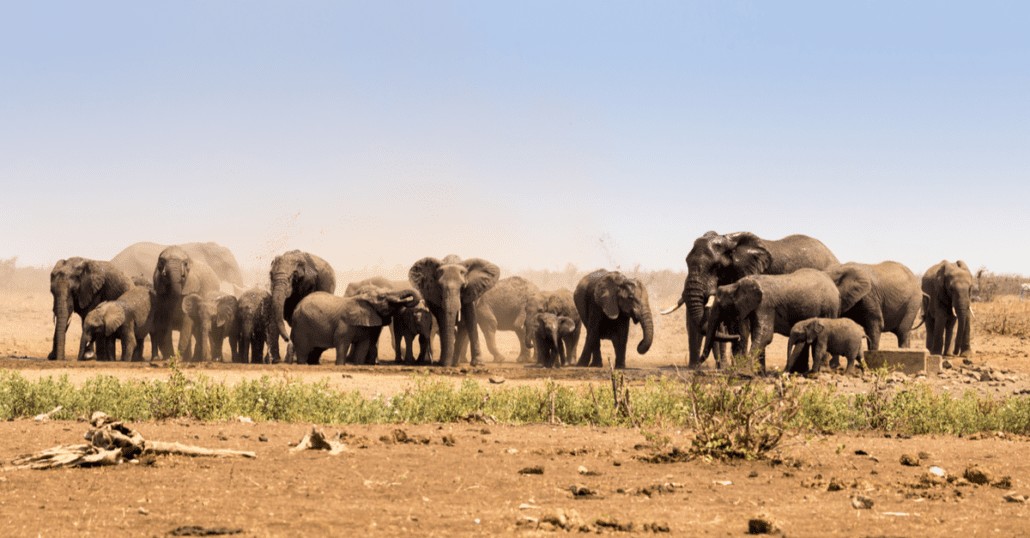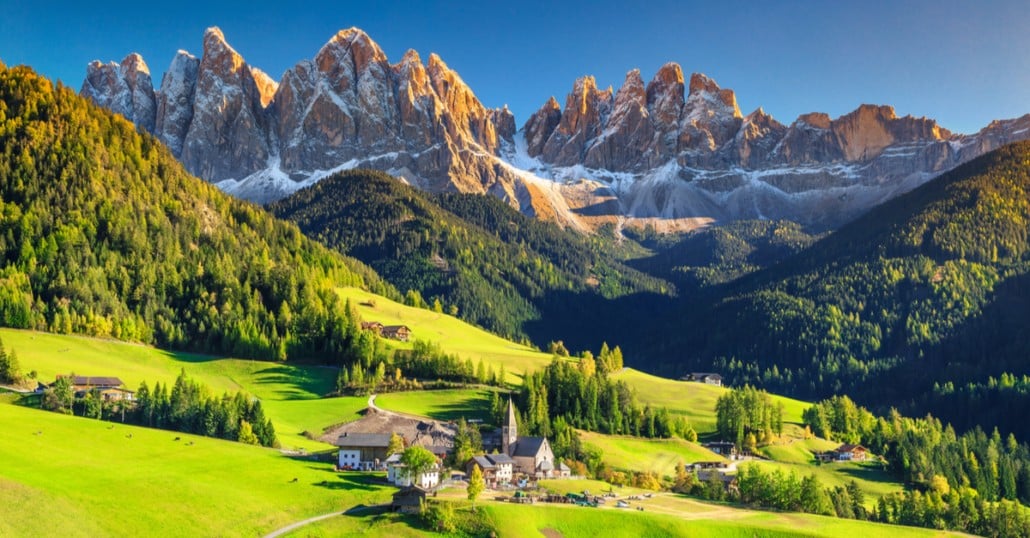Did you know there are over 4,000 national parks in the world? From underwater caves to verdant forests, the world’s best national parks are undeniable. Countries including Australia, China, and the United States have some of the most popular outdoor spaces in the world. These national parks consist of bodies of water, mountain ranges, wildlife, and more. For years, people have traveled to visit and experience the natural power of these sites.
As we begin to travel this summer, locations with close access to nature have become more popular than ever. This will continue to grow in 2021, as travelers embrace the great outdoors and open escapes. Mother Nature is getting ready to welcome visitors again. But how much do we know about these parks and why they are important to travelers and the planet?
History of National Parks
Every year, millions of visitors travel around the world to hike, swim, bike, and explore some of the world’s best national parks. But, did you know that the first national park in the world is not even 150 years old? In 1872, Yellowstone in the United States became the world’s first national park. Since then over 4,000 parks worldwide have been given this honorable status. Many of these national parks are even UNESCO World Heritage sites. According to Classzone.com, to become a national park, the natural location must meet the following criteria:
- The natural, recreational, and or natural resources the area has must be unique in nature.
- The outdoor location must be in need of protection. The National Park Service (NPS) is the only government body that can provide the right type of security and protection.
- It must be possible to even protect the area. If the outdoor area is not accessible by the NPS to protect, then it cannot be claimed as an official national park.

Importance of Park Preservation
To continue enjoying the world’s national parks, they must be preserved and protected. They are vital for protecting the world’s population of flora and fauna. As well as beautiful places to visit. They are also important for sustaining renewable resources that can contribute to saving the planet. Organizations like the NPS, National Parks Conservation Association, and the National Park Foundation have created dozens of helpful programs about the national parks. Their goals are to educate and welcome the public to aid in the contribution, restoration, and preservation of the world’s parks.
The Best National Parks in the World
Now that you know national park history and why park preservation is so important, check out the world’s best national parks. You will want to add each of these to your bucket list.
Plitviče Lakes National Park, Croatia

Croatia’s outdoor treasure is its largest national park, Plitviče Lakes. This park is located in central Croatia and spans over 73,350 acres (295 square kilometers). The park is famous for its 16 terraced lakes, that join by waterfalls that drop into a limestone canyon. This park, in particular, is so beautiful and untouched, that it is often compared to the Garden of Eden.
Not only was Plitviče Lakes one of Southeast Europe’s first national parks, but it is Croatia’s very first. It became a national park in 1949. In 1979 the lake became a UNESCO World Heritage site and welcomes over 1 million people a year. During a visit to Plitviče Lakes National Park, Croatia, you may even see some of the popular wildlife including brown bears, lynxes, and eagles. It is one of the most impressive and best national parks around the world.
Kruger National Park, South Africa

Visit South Africa’s Kruger National Park to see wildlife unlike ever before. This national park is one of Africa’s largest game reserves. It is 7,523 square miles (19,485 square kilometers). The park itself belongs to two South African provinces, bordering Mozambique and Zimbabwe. The Kruger National Park also has the largest species of mammals than any other game reserve in Africa. Including all big five game animals, lions, elephants, rhinoceros, cape buffalo, and leopards. Take an adventure to explore this African national park and marvel at the wonders of nature.
Dolomite National Park, Italy

Formally known as the Dolomiti Bellunesi National Park, the Dolomites is an Italian wonder. The famous park is located in the Veneto region. It became an official national park in 1988, and a UNESCO World Heritage site in 2009. This Italian national park is 12 square miles (32 square kilometers) which makes it the smallest park on our list of the world’s best national parks. That does not take away from its beauty and sheer power. The Dolomites includes 15 municipalities, several alpine mountain ranges, and springs and streams. If you are looking to pair a trip to Italy’s beautiful towns with an epic outdoor escape, then this is one of the best national parks to visit.
Iguaçu National Park, Brazil and Argentina

Iguaçu National Park in the Paraná State of Brazil is one of the largest national parks on this list. The park is about 457,794 acres, and 260 miles (420 kilometers). The park and its sister park in Argentina, often draw confusion, as Iguaçu park is located in Brazil, bordering Iguazú park in Argentina. Ultimately the same park, they are separated by the Iguaçu river which creates their border and drops into the Iguaçu Falls. The largest cataract in the park is named “The Devil’s Throat” which consists of 14 large falls over 350 feet deep.
The falls are the main sightseeing spot for both local and foreign visitors. This Brazilian park became a national park in 1939 and made the UNESCO World Heritage site list by 1986. Fun fact! The Iguaçu Falls are taller and twice the size of Niagra Falls in the United States. For natural wonders, it’s no surprise that this site makes the list for the world’s best national parks.
Grand Canyon National Park, United States of America

The Grand Canyon National Park, in Arizona, is one of the world’s most famous and best national parks. Spanning over 277 miles in length (446 meters), and over 6,000 feet deep (1800 meters), the Grand Canyon is one of the largest national parks in the world. Fun fact! It is larger than the state of Rhode Island. It is the 17th oldest national park in the country, founded in 1919. Although there are 419 national park sites in the US, the official list consists of 62 national parks.
The Grand Canyon is a very important site for geologists who track the erosion of the canyon. This erosion is caused by both the climate and the Colorado River. For travelers looking to visit the natural wonders of the world, this National Park is the perfect spot. So much so that it too belongs to the list of UNESCO World Heritage sites. An estimated 5.9 million visitors travel far and wide to marvel at the beauty of this famous U.S. national park.
Göreme National Park, Turkey

Since 1986, Turkey has welcomed visitors to its jaw-dropping Göereme National Park. Located in Central Anatolia in the Cappadocia region, this national wonder is known for its rock formations, or “fairy chimneys.” Ancient volcanos are believed to have spewed ash all over this region. The remains then solidified into the famous rocks. In the millions of years following, erosion from wind and rain began to carve these rocks into the cones you can see above.
The Turkish people began to carve homes, churches, businesses, and stores out of the rock to make this area liveable. Not only above Earth, but below as well, the park and region are famous for its underground cities. Göreme became an official national park and UNESCO World Heritage site in 1986. People around the globe travel from every end of the planet to visit this very unique national park. Also to experience a bucket list a hot air balloon ride above the city.
Zhangjiajie National Forest Park, China

Found in the Hunan Province, Zhangjiajie, is China’s first national forest park since 1982. This specific forest park is part of a much larger park, the Wulingyuan Scenic Area, which is another UNESCO World Heritage site since 1992. There are over 3,000 peaks, spires, pinnacles, and skyscraper high rock formations.
One of the main peaks stretches over 3540 feet tall (1080 meters), and was renamed “Avatar Hallelujah Mountain” in 2010. In 2002, China opened the Bailong Elevator, also known as Hundred Dragons Elevator. It is the world’s largest outdoor elevator and is almost 2,000 feet tall (over 330 meters). The elevator can take park visitors from the foot of the mount to the top in under two minutes. It the best way for park-goers to see the entire forest and exploring the hiking trails.
Fiordland National Park, New Zealand

The beautiful Fiordland National Park is located on New Zealand’s South Island. The park is 4867 square miles (12607 square kilometers). One can’t help but feel impressed by nature and its wonders after a visit to this pristine haven. The snow-capped peaks, breathtaking fjords, and cascading waterfalls are stunning. It truly is one of the world’s best national parks and most beautiful outdoor locations.
Fiordland became a national park in 1952. Although it is one of the country’s most popular sites, human activity in the area is limited. The largest and deepest fiord in the park is Doubtful Sound at 1381 feet deep (421 meters). This fiord is home to bottlenose dolphins, fur seals, and even penguins. When visiting New Zealand, this site is a must-visit.
Whitsunday Islands National Park, Australia

Whitsunday Islands National Park is one of the most fascinating outdoor landscapes in the world. This national park is in Queensland, Australia. The group of 74 islands can be found right in the heart of the Great Barrier Reef. Whitehaven Beach is often named one of the top beaches in the world. Its crystal blue waters, white sand which is made of 98% pure silica, and incredible views are hard to pass up. This beach can only be accessed by seaplane, helicopter, or boat. this makes the area remote, secluded, and difficult to visit regularly. A visit to Whitsunday Islands National Park is a once in a lifetime experience.
Arenal Volcano National Park, Costa Rica

The mighty Arenal Volcano and the surrounding national park are both a favorite for Costa Ricans and visiting tourists. The volcano itself was Costa Rica’s most active volcano, and it is roughly 5,358 feet tall (1,633 meters high). The park is located in the central region of Alajuela. Near the park, visitors from all over the world come to indulge in the spas and hotels, that offer natural hot springs on the volcano’s base.
While the volcano has not erupted in over 10 years, experts believe it is still active, ust in a “sleeping phase.” Other attractions near the park include ziplining, horseback riding, and hiking trails. If a visit to Costa Rica is on your bucket list, be sure to add Arenal National Park to the very top.
Komodo National Park, Indonesia

The Komodo National Park, in Indonesia, is located between the islands of Sumbawa and Flores, in the border between East Nusa Tenggara and West Nusa Tenggara. The park was founded in 1980 with the purpose of conserving the Komodo dragons, a species of lizard found in this region. The park consists of three large islands: Komodo, Padar, and Rinca, and 26 small ones, and it’s inhabited by around 5,700 Komodo’s giant lizards, which exist nowhere else in the world.
Nowadays, the Komodo National Park is committed to preserving many other animal species, including the orange-footed scrub fowl, and the Timor Deer. Aside from these terrestrial animals, the park is home to an abundance of marine creatures, harboring about 1,000 species of fish, 260 species of reef-building coral, and 70 species of sponges, and at least 14 species of whales.
Torres Del Paine National Park, Chile

If what you’re looking for is pristine natural beauty, the Torres del Paine National Park, Chile, is the place to go. Located in the Patagonia region, Torres del Paine was declared the eighth wonder of the world in 2013, this 227,298-hectare nature reserve is brimming with glacial lakes, icebergs, virgin forests, and extensive pampas.
One of the best national parks in the world for thrill-seekers, Torres del Paine is also home to abundant and varied wildlife. The fauna, for instance, consists of four vegetation types: the Pre-Andean scrubland, the Deciduous Magellanic forest the Patagonian steppe, and the Andean Desert. There’s also a diverse fauna, which includes species like the Patagonian puma, the Andean Grey Fox, the Andean Condor, aside from approximately 100 species of bird.
Serengeti National Park, Tanzania

The Serengeti National Park is one of the best national parks in the world for viewing wildlife migrations. Located in northern Tanzania, the park is well known for its annual migration of wildebeest and zebra aside from being home to more than 500 species of birds and 300 species of mammals (of which 80 large mammals).
Perfect for an African safari experience, the Serengeti National Park comprises 1.5 million ha of savannah, and it also plays host to incredibly large lions, leopards, elephants, buffalos, and rhinoceros, also known as “The Big Five”. The national park is also home to more friendly species, like the long-neck giraffes. And if birdwatching is your hobby, you can plan a visit to the national park between early November and late April, which is when European and North African migratory birds are present.
Banff National Park, Canada

Banff National Park is the oldest and first national park in Canada and it’s located within an hour and a half drive west of Calgary, Alberta. The park started as a 26 square kilometer hot springs reserve and now consists of 6,641 square kilometers of a sanctuary dotted with mountains, lakes, glaciers, forests, and ice fields.
One of the best national parks in the world for sightseeing alpine landscapes and plenty of natural beauty, this national park has over 994.1939 miles of hiking trails, and the prime hiking season runs July through mid-September. You can explore lakes and waterfalls by yourself, or even take a guided hiking tour with an expert to learn more about the park.
The Banff National Park also has prime birdwatching spots for you to go to during spring and early summer. Take your binoculars and try to spot the local species of bird — over 260 species have been recorded in Banff.
Guilin and Lijiang River National Park, China

It’s easy to see why the Guilin and Lijiang River National Park is one of the best national parks in the world. Located in the northeastern region of Guangxi Zhuang, China, the park is bathed by the Li River, which flows a total of 102 miles between the cities of Yangshuo and Guilin City. A great idea, by the way, is to take a river cruise to uncover the epic scenery found between the cities. You can also explore them on foot and wander around its hills. The major highlights at Guilin-Lijiang are the Fengcong and Fenglin karsts — a topography formed from the dissolution of soluble rocks — and limestone mountains. The park features hiking trails as well, such as the short 1.3 mile Reed Flute Caves Trail, which will take you to wander through the fields and forests making your way to the caves.
Now that you have explored the world’s best national parks, it’s time to plan your visit. Learn more about CuddlyNest’s incredible hotels and vacation rentals to stay at during your national park adventure. Discover endless staycation opportunities for your summer travels.




CuddlyNest provides all accommodations to all travelers at the best price. Find unlimited travel inspiration on our blog and social media channels.




